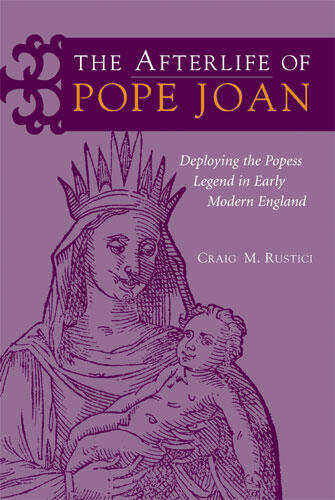The Afterlife of Pope Joan
Deploying the Popess Legend in Early Modern England
Investigates representations of the legend of Pope Joan in Early Modern England and their implications on social, political, and religious thought
Description
Amid the religious tumult of the sixteenth and seventeenth centuries, English scholars, preachers, and dramatists examined, debated, and refashioned tales concerning Pope Joan, a ninth-century woman who, as legend has it, cross-dressed her way to the papacy only to have her imposture exposed when she gave birth during a solemn procession.
The legend concerning a popess had first taken written form in the thirteenth century and for several hundred years was more or less accepted. The Reformation, however, polarized discussions of the legend, pitting Catholics, who denied the story’s veracity, against Protestants, who suspected a cover-up and instantly cited Joan as evidence of papal depravity. In this heated environment, writers reimagined Joan variously as a sorceress, a hermaphrodite, and even a noteworthy author.
The Afterlife of Pope Joan examines sixteenth- and seventeenth-century debates concerning the popess’s existence, uncovering the disputants’ historiographic methods, rules of evidence, rhetorical devices, and assumptions concerning what is probable and possible for women and transvestites. Author Craig Rustici then investigates the cultural significance of a series of notions advanced in those debates: the claim that Queen Elizabeth I was a popess in her own right, the charge that Joan penned a book of sorcery, and the curious hypothesis that the popess was not a disguised woman at all but rather a man who experienced a sort of spontaneous sex change.
The Afterlife of Pope Joan draws upon the discourses of religion, politics, natural philosophy, and imaginative literature, demonstrating how the popess functioned as a powerful rhetorical instrument and revealing anxieties and ambivalences about gender roles that persist even today.
Craig M. Rustici is Associate Professor of English at Hofstra University.
Craig M. Rustici is Associate Professor of English at Hofstra University.
Visit Craig Rustici's website
Reviews
"Rustici revists the controversy, investigating the history of gender-role anxieties."
- University of Chicago Magazine
—University of Chicago Magazine
"Rustici's exposition of this two-sided argument is particularly fascinating."
- Megan Conway, Louisiana State University - Shreveport
—The Sixteenth Century Journal
"The Afterlife of Pope Joan is to be commended as a fascinating literary study and intellectual history"
- Sarah Covington, Queens College, The City University of New York
—Sarah Covington, Queens College, The City University of New York, Renaissance Quarterly
"Rustici's analyses are most exciting when they reach toward big claims like . . . and help to illuminate not just a given text but the general phenomenon of anti-Catholicism in post-Reformation England and the remarkable consistency with which polemicists associated Catholicism with women and the feminine so as to discredit all three."
- Frances E. Dolan
—Frances E. Dolan, Modern Philology

